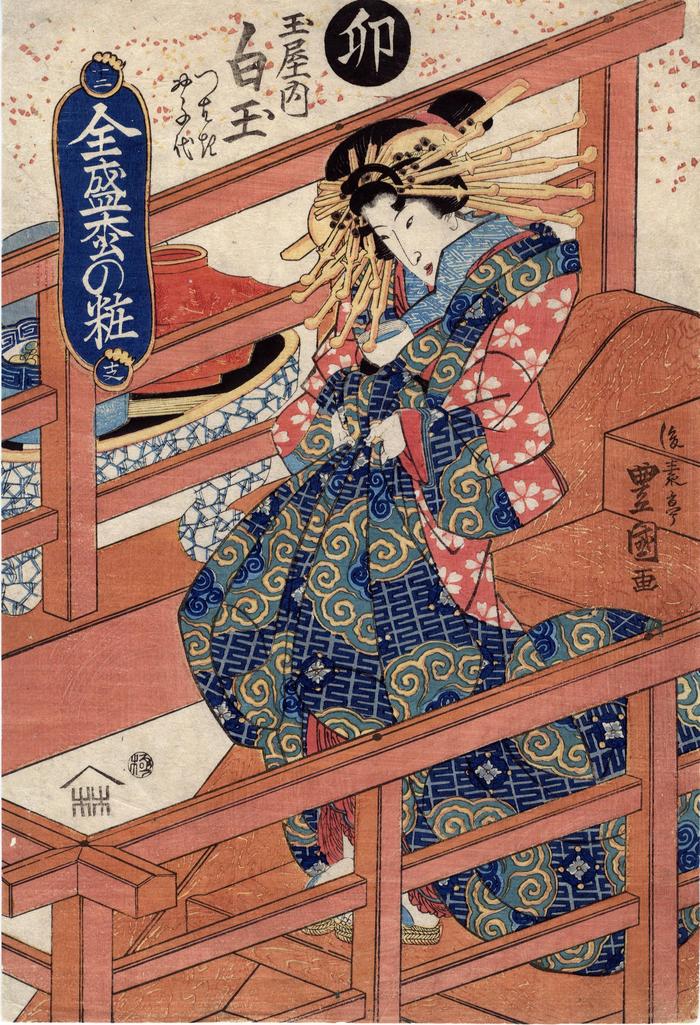Utagawa Toyokuni II (二代目歌川豊国) (artist 1777 – 1835)
Shiratama of the Tamaya (玉屋内白玉), representing the sign of the rabbit (usagi - 卯) from the Zodiac series Zensei matsu no shō, jūni shi ('Makeup of Flourishing Pine Trees' - 全盛松の粧)
ca 1833
10 in x 14.625 in (Overall dimensions) color woodblock print
Signed: Gosotei Toyokuni ga
後素亭豊國画
Publisher: Iseya Rihei
(Marks 152 seal 01-122)
Censor's seal: kiwame
Japan Arts Council - the courtesan Michisode (満袖)
Honolulu Museum of Art - Nagatayū of the Okamoto-ya
Museum of Fine Arts, Boston - Hanaōgi of the Ōgi-ya
Museum of Fine Arts, Boston - Toyooka of the Okamoto-ya
Oita Prefectural Museum - Yoyoginu (?) of the Kurata-ya
Oita Prefectural Museum - another copy of the print in the Lyon Collection
Museum of Oriental Art, Venice (via Ritsumeikan University) Our suspicion is that this series was sponsored by a cosmetics firm based on the title. The word 粧 means 'cosmetics'.
****
Marks says that the series, which he calls Jūnishi zensei matsu no yosooi was published late 1820s. In Honolulu and the Tokyo Metropolitan Library are copies of the print which represent the monkey (申). Like the print in the Lyon Collection the courtesan, Nagatayu of the Okamoto-ya, is sumptuously dressed. This is true of all of the other courtesans, too.
There is little agreement about the dating of this series. The TML dates the series to 1833. At Shizuoka they say 1834. Others give the late 1820s while some don't even bother to establish a firm date.
So far, we know of nine prints from this series which we have been able to locate. Where are the other 3? This one in the Lyon Collection is number 3 (三). The Japan Arts Council has a copy of the Cock (酉). There is another one, the Dog (戌), at the Oita Prefectural Art Museum. At Ichinomiya City Memorial Art Museum is another print from this series. The Shizuoka Prefectural Central Library owns a totally different image. The seventh print we have tracked down has been offered recently in the trade. An eighth example, the Ram (未), can be found at a Wiki site. The Dragon (辰) which was sold at a Lempertz auction was found on the Internet at Artnet.com.
****
There are clearly two different editions of this print at the least. This can be seen most obviously by comparing this example in the Lyon Collection with the one in the Museum of Oriental Art in Venice. (See the link above.) The most obvious difference is in the treatment of the stairwell.
beautiful woman picture (bijin-ga - 美人画) (genre)
Iseya Rihei (伊勢屋利兵衛) (publisher)
Jūnishi (十二支 - 12 signs of the Zodiac) (genre)
